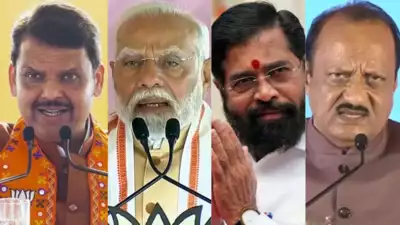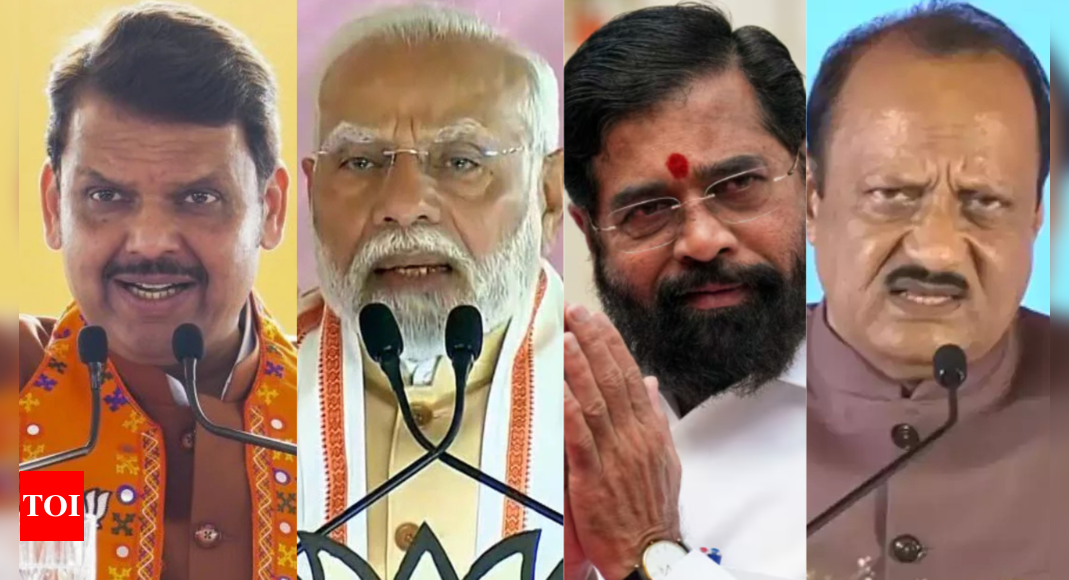
In the MVA, the Nationalist Congress Party (Sharadchandra Pawar) candidates may secure around 10 seats, Congress 16, and Shiv Sena (Uddhav Balasaheb Thackeray) 21 seats.
Assembly Election Results
The Mahayuti’s landslide win in Maharashtra assembly elections with the BJP giving its best-ever poll performance in the state can be attributed to several strategic initiatives and socio-political factors.
Here are five key reasons behind Mahayuti’s victory:
Ladki Behan and other welfare schemes
The Ladki Behan Yojana emerged as a pivotal factor in the BJP’s electoral strategy.
Launched under the Mahayuti alliance, this scheme targeted women aged 21 to 65 from families with an annual income below Rs 2.5 lakh.
The initiative promised direct cash transfers of Rs 1,500 per month, which was a significant pull factor for women voters. The BJP also pledged to increase this amount to Rs 2,100 if they retained power, showcasing their commitment to women’s welfare.
The scheme’s impact was profound; it contributed to a notable increase in female voter turnout, rising from 59.26% in 2019 to 65.21% in the recent elections.
Over 2.3 crore women benefited from this scheme, with many receiving substantial financial support, which undoubtedly swayed voter sentiment in favor of the BJP-led alliance.
This focus on welfare not only addressed immediate economic concerns but also reinforced the party’s image as a pro-women entity, crucial for garnering support in rural and semi-urban areas.
Pacifying Maratha sentiments
The Maratha community, a significant demographic in Maharashtra, has historically been influential in state politics.
The BJP’s proactive stance on Maratha reservations helped pacify this community, which had been agitating for affirmative action for years. By advocating for reservations and addressing their concerns directly, the BJP managed to secure substantial support from Maratha voters.
This outreach was particularly effective in constituencies where Maratha influence is strong. Reports indicated that the Mahayuti coalition won over 80 out of 100 constituencies dominated by Maratha voters. By prioritising development and inclusion for all communities, including Marathas, the BJP successfully navigated caste-based politics and expanded its voter base.
Outreach to Other Backward Classes
The BJP’s strategy included a focused outreach to Other Backward Classes (OBCs), which are crucial in Maharashtra’s electoral landscape.
The party’s efforts to consolidate support among non-Maratha castes involved addressing their specific needs and concerns through targeted campaigns and policies.
This approach was complemented by grassroots mobilization efforts that resonated with OBC voters.
By emphasizing social justice and development initiatives tailored for OBC communities, the BJP effectively countered any anti-BJP sentiment that had emerged during previous elections. This outreach not only helped secure OBC votes but also positioned the BJP as a representative of broader social justice issues within the state.
Strong ground presence of RSS
The Rashtriya Swayamsevak Sangh (RSS) played a crucial role in the BJP’s campaign strategy by mobilising grassroots support across Maharashtra shortly after the NDA suffered a setback in the Lok Sabha elections in the state.
Their extensive network allowed for direct engagement with voters, facilitating effective communication of the BJP’s message while countering opposition narratives.
The RSS’s involvement ensured that local issues were addressed while reinforcing a unified Hindu identity through slogans like “Ek Hai Toh Safe Hai” (Together, we are safe). This slogan appealed to various caste groups and emphasised communal harmony against perceived divisive politics from opposition parties.
The grassroots mobilisation efforts by RSS cadres were instrumental in increasing voter turnout and solidifying support for the BJP-led alliance.
‘Ek hai toh safe hai’
The BJP’s campaign utilised powerful messaging that resonated with voters’ sentiments regarding unity and security.
PM Modi’s slogan “ek hai toh safe hai” highlighted communal harmony and stability, positioning the party as a protector against fragmentation it alleged was being caused by opposition parties.
This messaging was particularly effective in countering allegations of divisiveness and reinforced the narrative of a united front against political adversaries.
Additionally, the campaign effectively communicated the successes of various welfare schemes while portraying the opposition as ineffective or disconnected from grassroots realities. This strategic framing helped solidify voter loyalty among those who benefitted from government initiatives while appealing to broader concerns about safety and stability within the state.
(With inputs from agencies)
Source link

